If in my last post spring was swinging to summer; yesterday served as a ready iron gate sending spring clanging shut into summer.
Yesterday was a concurrent summer solstice and full moon: from what I am told it is known as a Strawberry Moon and the last was in the summer of 1967 — the summer of love. And I’m of the kind that feels we could use another summer of love. So here’s to a summer of compassion, gratitude, kindness, transparency and: love.
In the words of the great poet Kahil Gibran:
You work that you may keep pace with the earth and the soul of the earth.
For to be idle is to become a stranger unto the seasons,
and step out of life’s procession, that marches in majesty and proud submission towards the infinite.
When you work you are a flute through whose heart the whispering hours turn to music…

Calochortus vestae — note the incredible “double arch” nectary (Look just below the giant black petal spot for a hairy looking line). Also notice the liquid in the cup of this lovely lily. When I saw this I thought it was nectar — so without thinking I slurped it out! Turns out it was fresh rain… You can imagine my glee.
We begin today by yielding to the difficulty of the chronicler — so much has occurred in the last month! I am full of respect for those that narrate the events unfolding before and within them — CLM Interns, mentors, scientists, naturalists, poets…!
Routing a trail through the life of this CLM intern over the past few weeks is one with all the necessary rocks, twists, turns, uphills, downhills and stunning vistas.
The work of a steward runs and flows on brilliantly, like a headwaters rivulet. Through this work we are afforded tiny glimpses of what we previously did not know or did not know was possible. This is called discovery. When the shrouds drop suddenly and we sense what was previously senseless, this is one of the great joys of the naturalist, steward and CLM intern.
The last month on the North Coast has yielded so many of these unveilings, beginning with a trip to botanize and better understand a little known Arcata BLM property with the fantastic mentor and botanist, Jennifer Wheeler. The important thing here is that this area was reported to us as a “moonscape,” which is a very suggestive and tantalizing prospect to a botanist, invoking dreams of new and unique edaphic endemics (plants that only grow on unique and harsh soils). The short is that it was an incredible day, but the “moonscape” was more likely due to slope aspect and very thin soils rather than ultramafic or otherwise unique soil. A few photos of our discoveries:

Allium falcifolium and the plants that enjoy abundance on the moon!

In a field of Mimulus kellogii, this individual showed a unique and wonderful corolla color mutation. I have NEVER seen this before!

Another very, very new plant for me: Cacaliopsis nardosmia: Silver-crown (Asteraceae).
The next exploration expedition I had the privilege of botanizing was out to a large BLM property Travis Ranch, where Jennifer and I monitored grazing leases and had the opportunity to make a few discoveries (along with the rest of the field office):

A genus I have a very special place in my heart for: Clarkia. Clarkia purpurea subsp. viminea (Wine-cup Clarkia).

The very next day I was out in the King Range, my field offices’ most contiguous and best known diamond of discovery. We walked a trail that may some day be official, and Jennifer and I kept our noses to the ground in what can be a rather repetitious habitat type for a botanist — Mixed evergreen forest. We delighted in several of the fantastical mycotrophs — plants that parasitize fungi in order to gain the nutrients they need. These plants are highly ephemeral so it is a real treat to find several of them!

Monotropa hypopytis – Pine Sap. No chlorophyll no problems!

Corallorhiza maculata, Spotted Coralroot (Orchidaceae).

Pleuricospora fimbriolata – Fringed Pinesap
 I was back in the King Range the very next week for a 4 day/3 night backpacking trip on the Lost Coast with BLM Partner and local conservation supergroup — Mattole Resoration Council. We set off to remove non-native and invasive species in the backcountry, and I gratefully left my camera at home. I spent my 23rd birthday beside the Pacific, camped amongst the driftwood on the beach — enjoying the joining place of mountains, Big Creek and Pacific Ocean.
I was back in the King Range the very next week for a 4 day/3 night backpacking trip on the Lost Coast with BLM Partner and local conservation supergroup — Mattole Resoration Council. We set off to remove non-native and invasive species in the backcountry, and I gratefully left my camera at home. I spent my 23rd birthday beside the Pacific, camped amongst the driftwood on the beach — enjoying the joining place of mountains, Big Creek and Pacific Ocean.
I was at the office after this trip for a short and high octane week of work on my Seeds of Success collection targets and then was off to the CLM workshop in Chicago!

The CLM workshop and training was a nutritive whirlwind and truly special experience. The farthest East I have ever been — seeing the Rocky Mountains for the first time from 37,000 feet — recognizing the beauty of the Midwest, juxtaposed by the fragmentation and lack of wild lands in that part of the country — seeing plainly my unique connection to California and the importance of place-based connection inherent in the CLM program. And this is all superseded by the learning, networking and engagement of the week. I am truly honored to be one small part of the CLM internship program.

Chicago Botanic Garden.

Restored Midwestern Forest. The garden is largely restored native habitats. Also shown is the adept Alaskan intern Jacob Dekraai.
The prevailing wind of these anecdotes is one of discovery — not just for the sake of joy (although a significant side effect), but in the vein of stewardship, cherishing, and comprehension. Without these three aspects we cannot hope to effectively manage the lands we are responsible for. Only with our feet firmly on the ground, our hundreds of senses open, and our minds hungry to connect the seemingly scattered can we give the land that lends so much to us what it deserves. Simple personal discovery is deeply rooted in this process, and it is the process and prowess of the naturalist. I should clarify by saying that almost everything can be ruled a discovery in my usage of this term, especially your meeting with a previously unrecognized organism and fellow member of our collective earth-bivouacking. Even a new day is a discovery — who can know with questionless certainty that it will come again? When we gather the ripening fruits of discovery from all around us, at every possible opportunity, we rise into the light of the lands around us.
Coming on down in the next month!? Continued Seeds of Success collecting, climate adaptation surveys on the coastal dunes, plant lists, herbarium work and mountain time on the weekends!
Kaleb Goff
Arcata BLM Field Office, Arcata, California.





















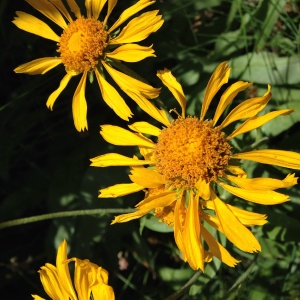
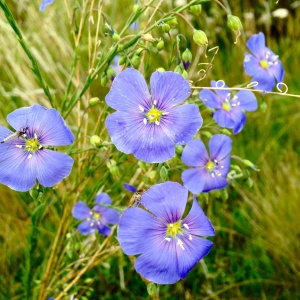
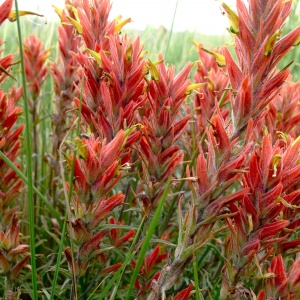


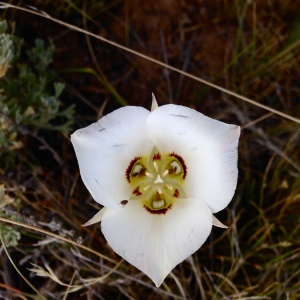
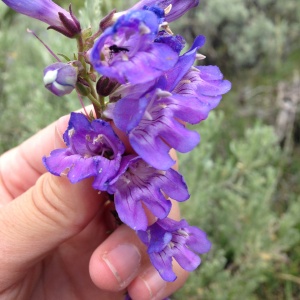
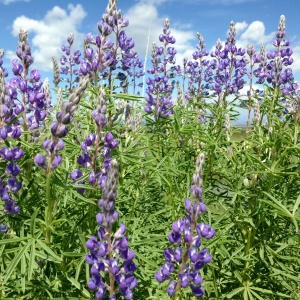

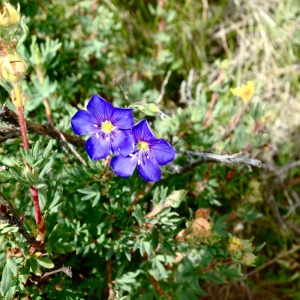

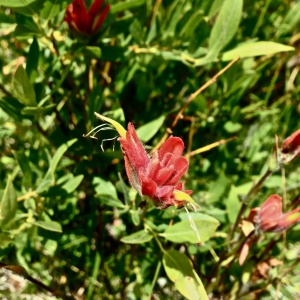


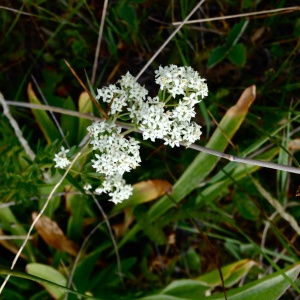


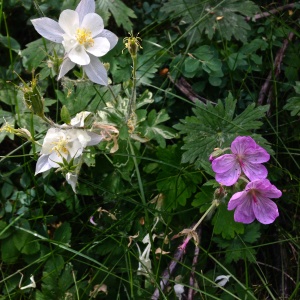


























 We drove through some tiny towns in Idaho, probably around a 1000 each. Just a highway as the main road with a gas station and a small restaurant as the only buildings visible. On either side of the highway there are several interest signs sprawled: signs for state parks, caves, and fossil beds along the drive. I need to check those out.
We drove through some tiny towns in Idaho, probably around a 1000 each. Just a highway as the main road with a gas station and a small restaurant as the only buildings visible. On either side of the highway there are several interest signs sprawled: signs for state parks, caves, and fossil beds along the drive. I need to check those out.

 I dropped the pin vertically and watched what it hit. “This grass and dirt. What is this grass?” “15.5 meter. Rock.” “16 meters. A bush, a flower, and dirt with Herbaceous Litter.” I was soon told what plant I hit and the correct code to write down on the sheet. I also measured each plant’s drooping height. I got the hang of the shtick, but I was bending too much at the waist, instead of the knees. I got a little dizzy, and drank my warm refreshing tap water to recover my balance. Afterwards my partner for the drop took measurements for sage brush cover and the third member of our group finished up the forb diversity check.
I dropped the pin vertically and watched what it hit. “This grass and dirt. What is this grass?” “15.5 meter. Rock.” “16 meters. A bush, a flower, and dirt with Herbaceous Litter.” I was soon told what plant I hit and the correct code to write down on the sheet. I also measured each plant’s drooping height. I got the hang of the shtick, but I was bending too much at the waist, instead of the knees. I got a little dizzy, and drank my warm refreshing tap water to recover my balance. Afterwards my partner for the drop took measurements for sage brush cover and the third member of our group finished up the forb diversity check. Don’t worry. I made it back to the field office. We hiked a mile and a quarter to another pin drop site. Saw some yellow bellied marmots. Traversed some small gorges with small streams. I had no expectation of seeing water in the high desert. We got lost on the way back. We should have marked the truck with a GPS dot but found the truck after wandering. We drove back and called it an 11 hour day. Enough was enough for one day. Slept like a babe that night. A fun day, and a day that I had not imagined.
Don’t worry. I made it back to the field office. We hiked a mile and a quarter to another pin drop site. Saw some yellow bellied marmots. Traversed some small gorges with small streams. I had no expectation of seeing water in the high desert. We got lost on the way back. We should have marked the truck with a GPS dot but found the truck after wandering. We drove back and called it an 11 hour day. Enough was enough for one day. Slept like a babe that night. A fun day, and a day that I had not imagined.


